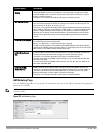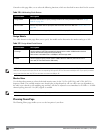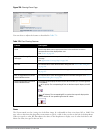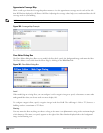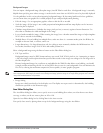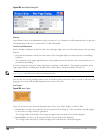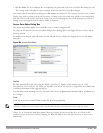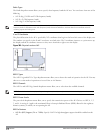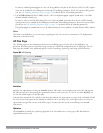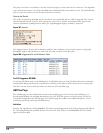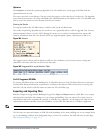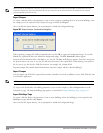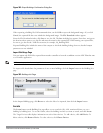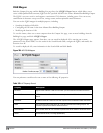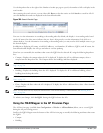
810 | RF Plan DellPowerConnectW-SeriesArubaOS6.2 | User Guide
Radio Types
The Radio drop-down menu allows you to specify what frequency band the AP uses. You can choose from one of the
following:
l 802.11a/b/g (2.4 GHz and 5 GHz frequency bands)
l 802.11a (5 GHz frequency band)
l 802.1 b/g (2.4 GHz frequency band)
NOTE: 802.11n (HT) support features are available on the 2.4 or 5 GHz frequency band. The availability of these options on these
frequency bands is dependent on the radio (frequency band) chosen and whether or not these feature were enabled on the AP
modeling page at the building level.
X and Y Coordinates
The physical location of the AP is specified by X-Y coordinates that begin at the lower left corner of the display area.
The numbers you specify in the X and Y text boxes are whole units. The Y-coordinate increases as a point moves up
the display and the X-coordinate increases as they move from left to right across the display.
Figure 385: Physical Location of AP
802.11 Types
The 802.11 b/g and 802.11a Type drop-down menus allow you to choose the mode of operation for the AP. You may
choose to set the mode of operation to Access Point or Air Monitor.
802.11 Channels
The 802.11a and 802.11b/g channel drop-down menus allow you to select from the available channels.
NOTE: The available channels vary depending on the regulatory domain (country) in which the device is being operated.
802.11 Power Levels
The power level drop-down menus allow you to specify the transmission power of the AP. Choices are OFF, 0, 1, 2,
3, and 4. A setting of 4 applies the maximum Effective Isotropic Radiated Power (EIRP) allowed in the regulatory
domain (country) in which you are operating the AP.
802.11n Features
l 802.11n (HT) Support (2.4 or 5 GHz): Specify if 802.11n high-throughput support should be enabled on this
AP.




